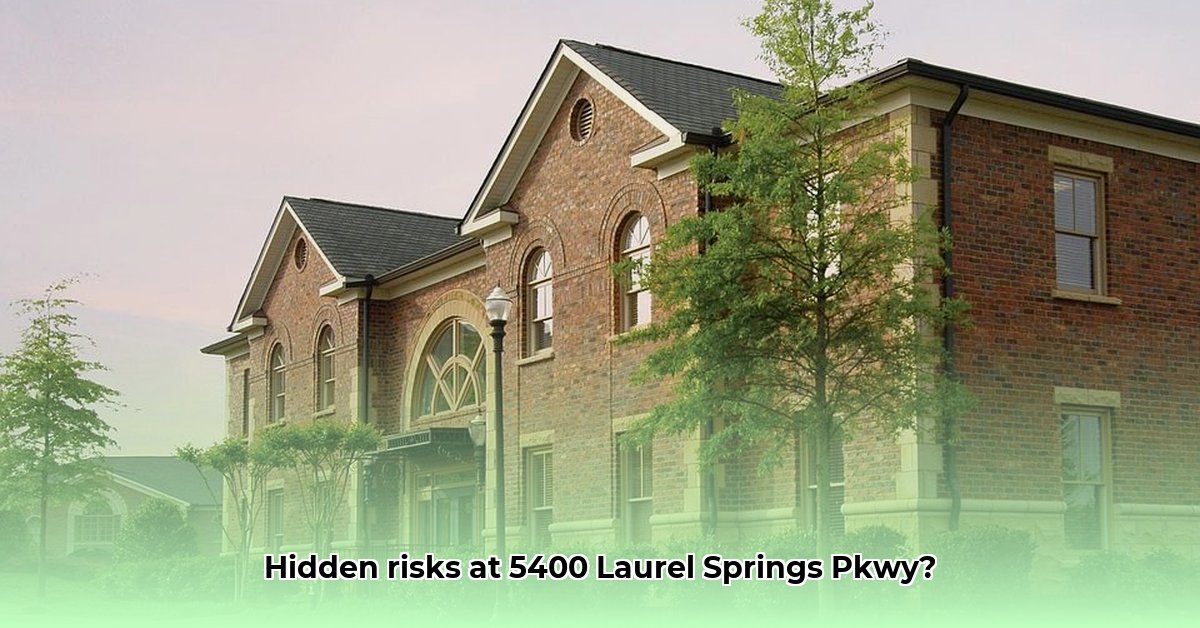
Executive Summary
This report assesses the environmental risks and investment value of the commercial property located at 5400 Laurel Springs Pkwy, Suwanee, GA 30024. While the property benefits from a desirable location and modern amenities, increasing wildfire risk and declining air quality present significant challenges. This analysis provides a structured overview of these risks, a prioritized mitigation strategy, and actionable recommendations for property owners, potential tenants, and insurers. The ultimate investment value hinges on proactive risk management. For further information on commercial property management, see this resource.
Site Overview and Amenities
5400 Laurel Springs Pkwy is a modern office building situated within a high-end office park in Suwanee, GA. Its attractive location near a country club and golf course contributes to its appeal and potential tenant pool. The building features ample parking, private offices, meeting rooms, and comfortable common areas. These amenities contribute to its immediate market value. However, a comprehensive risk assessment is crucial to evaluating its long-term sustainability and investment potential.
Environmental Risk Assessment: Wildfire and Air Quality
Wildfire Risk
Recent data indicates a concerning increase in wildfire risk in the Suwanee area. This presents a direct threat to the property at 5400 Laurel Springs Pkwy. The proximity to natural vegetation, building materials, and prevailing wind patterns all contribute to the overall wildfire risk level. A detailed analysis, including a precise assessment of proximity to forested areas and vegetation density, is necessary to quantify this risk accurately. Is the current landscaping fire-resistant, and is sufficient defensible space maintained? These questions require immediate attention.
Air Quality Concerns
Declining air quality represents another significant long-term risk. Poor air quality poses health hazards to tenants and could affect the property’s long-term desirability. Regular monitoring of air quality indices and potential mitigation strategies for the building’s HVAC systems are crucial. What specific pollutants are of concern, and what are their projected concentrations? This data informs effective mitigation planning.
Risk Mitigation Strategies and Recommendations
This section outlines actionable steps for various stakeholders to mitigate the identified environmental risks. Proactive management is critical for maintaining the property’s value and ensuring the safety and well-being of occupants.
For Property Owners/Management:
- Comprehensive Environmental Risk Assessment: Commission a detailed assessment of wildfire and air quality risks, factoring in proximity to vegetation, building materials, and local climate data. (Target completion: within 6 months)
- Wildfire Mitigation: Implement short-term measures such as creating defensible space through fire-resistant landscaping and long-term actions such as investing in fire-retardant building upgrades (roofing, ventilation). (Target completion: Within 1 year for short-term; 3-5 years for long-term)
- Air Quality Management: Monitor air quality indices continuously and upgrade HVAC systems with air filtration capabilities as needed. (Ongoing monitoring and upgrades as needed).
- Insurance Review: Review current property insurance policies to ensure sufficient coverage for wildfire and air quality-related damages. (Review annually)
For Potential Tenants:
- Due Diligence: Request and thoroughly review the environmental risk assessment conducted by the property owner.
- Risk Assessment: Evaluate your risk tolerance regarding wildfire and air quality before committing to a lease.
- Long-Term Planning: Consider the potential long-term environmental impacts on your business operations.
For Insurance Companies:
- Risk Profile Update: Re-evaluate the property’s risk profile, incorporating wildfire and air quality data into your risk assessment models. (Update annually)
- Premium Adjustment: Adjust insurance premiums to reflect the assessed risks, offering specialized coverage for wildfire and air pollution-related damages. (Update annually)
- Product Development: Explore developing customized insurance products specifically addressing the risks associated with wildfires and poor air quality in commercial properties. (Long-term development)
Conclusion
5400 Laurel Springs Pkwy offers significant advantages, but its long-term value and desirability are directly tied to proactive environmental risk management. The recommendations outlined above provide a framework for mitigating identified risks, protecting investments, and ensuring the safety and well-being of all stakeholders. A multi-faceted approach, involving thorough assessments, targeted mitigation strategies, and ongoing monitoring, is essential for maximizing the property's long-term value. Ignoring these risks could significantly jeopardize the property's investment potential.